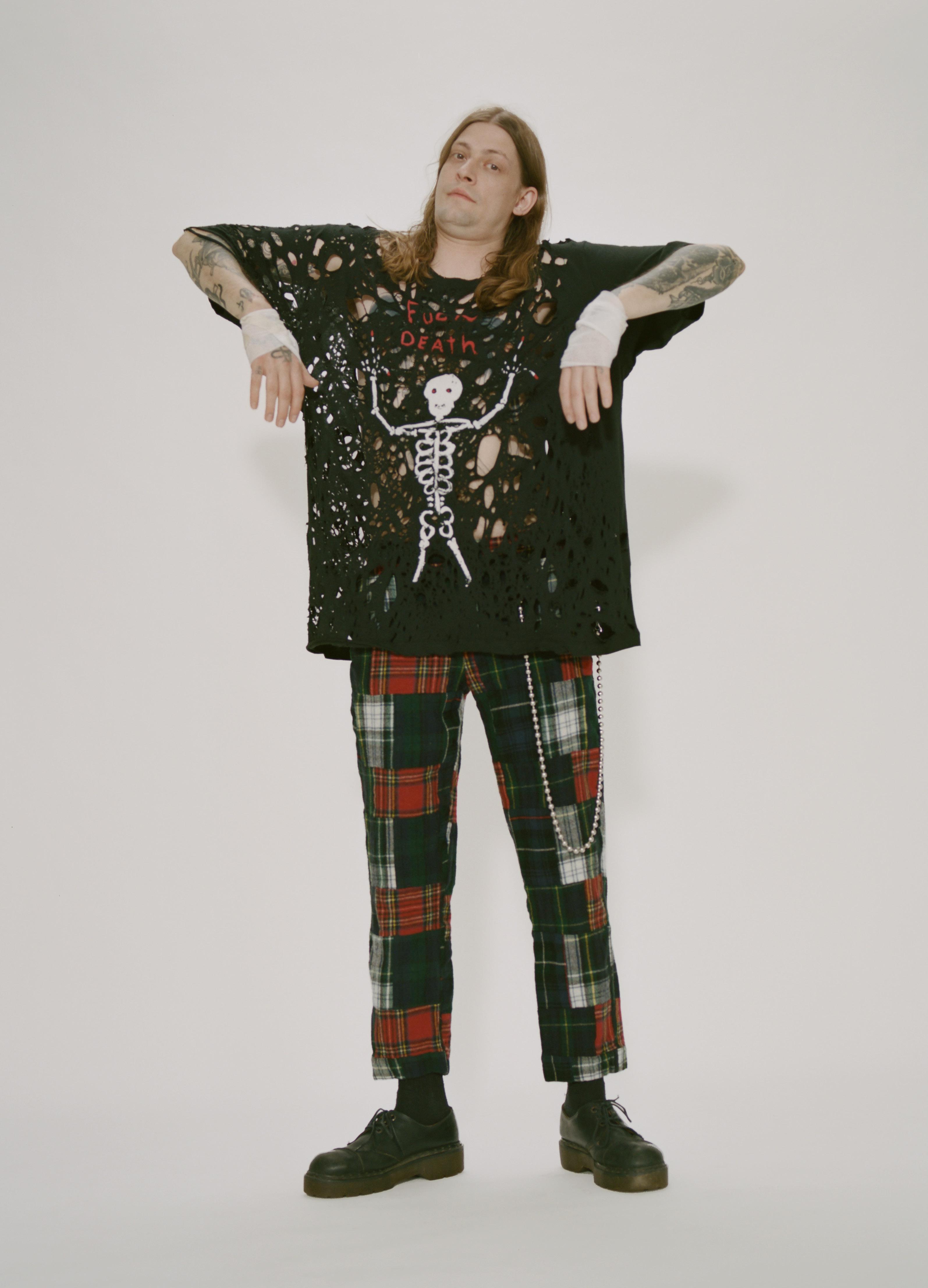O — I know there’s been a lot of talk in the industry and on social media calling you out for copying another designer regarding the Diet Prada post. You responded by calling the reproduction “fashion fan fiction.”
V — This is something that has been going on for a long time. Literally everyone does it, and although doing it to a peer— or say, someone on the come-up—is not cool, referencing the masters of your medium is the past, present and future of being creative. Sometimes saying “everyone else is doing it” can enable people to excuse bad things. The way in which things are done makes the difference. Even with a one-to-one, we are reconceptualizing, and once it’s on it has new context.
O — I guess you can’t necessarily see that everyone’s doing it, because most big brands are trying to hide it, while you guys are generally open enough with your appropriation to put it right in the collection, and not covertly.
V — Look at Rihanna, who covered that Tame Impala song, which is lit. Because she’s cool, and she just did it. Fashion has historically been a heavily segregated industry, so the idea of allowing alternative communities access to that is hopeful. It’s inclusive, and that can be innovative. Our work is also about mixing elements, collaging elements, that itself is alive as far as general awareness, because of the internet. You can find anything on the internet, so I think you’ll find a lot of people who are working in that kind of way.
O — The work you do consistently references current events, or comments on our cultural climate, sometimes functioning as a message for the media age. What keeps you stimulated and inspired while you’re working on these themes in the studio?
V — It comes naturally. We are a narrative clothing line and develop our characters mindfully, and we normally have each collection based on two opposing elements. We are always thinking about contrasts between the present characters. Telling a story and creating these different characters, while also adding the political message, is extremely important to us, and we’ve found that with that it often ultimately evolves on its own. If you try to be really obviously political in the approach, it seems so forced, but I think we come to something naturally, influenced by the existing social and cultural climate.
O — What’s your working concept for the upcoming FW 2018 collection?
V — We can’t reveal too much, but we can say it will be unexpected.
O — So, expectedly unexpected?
V — No. Just unexpected. —END
